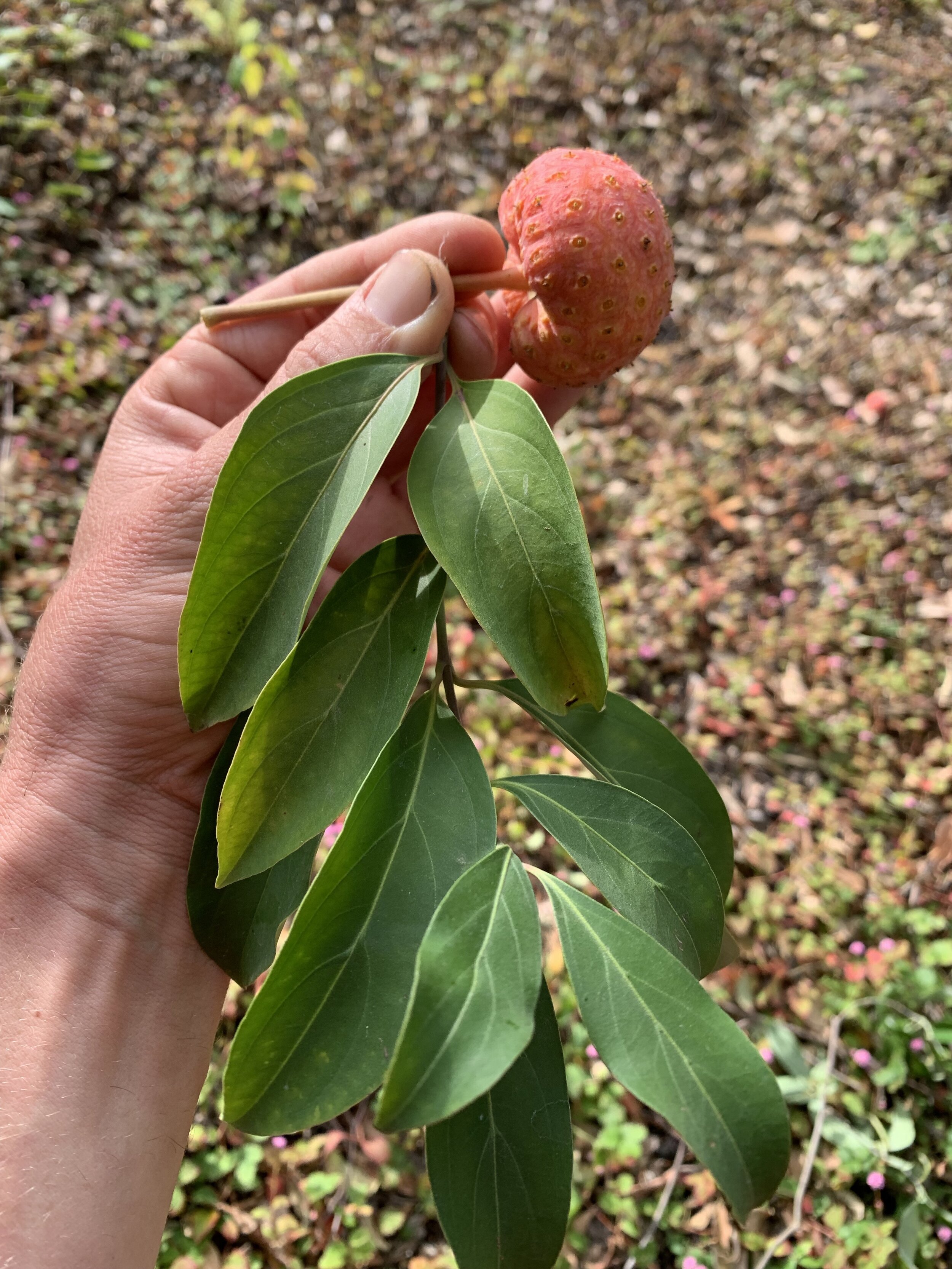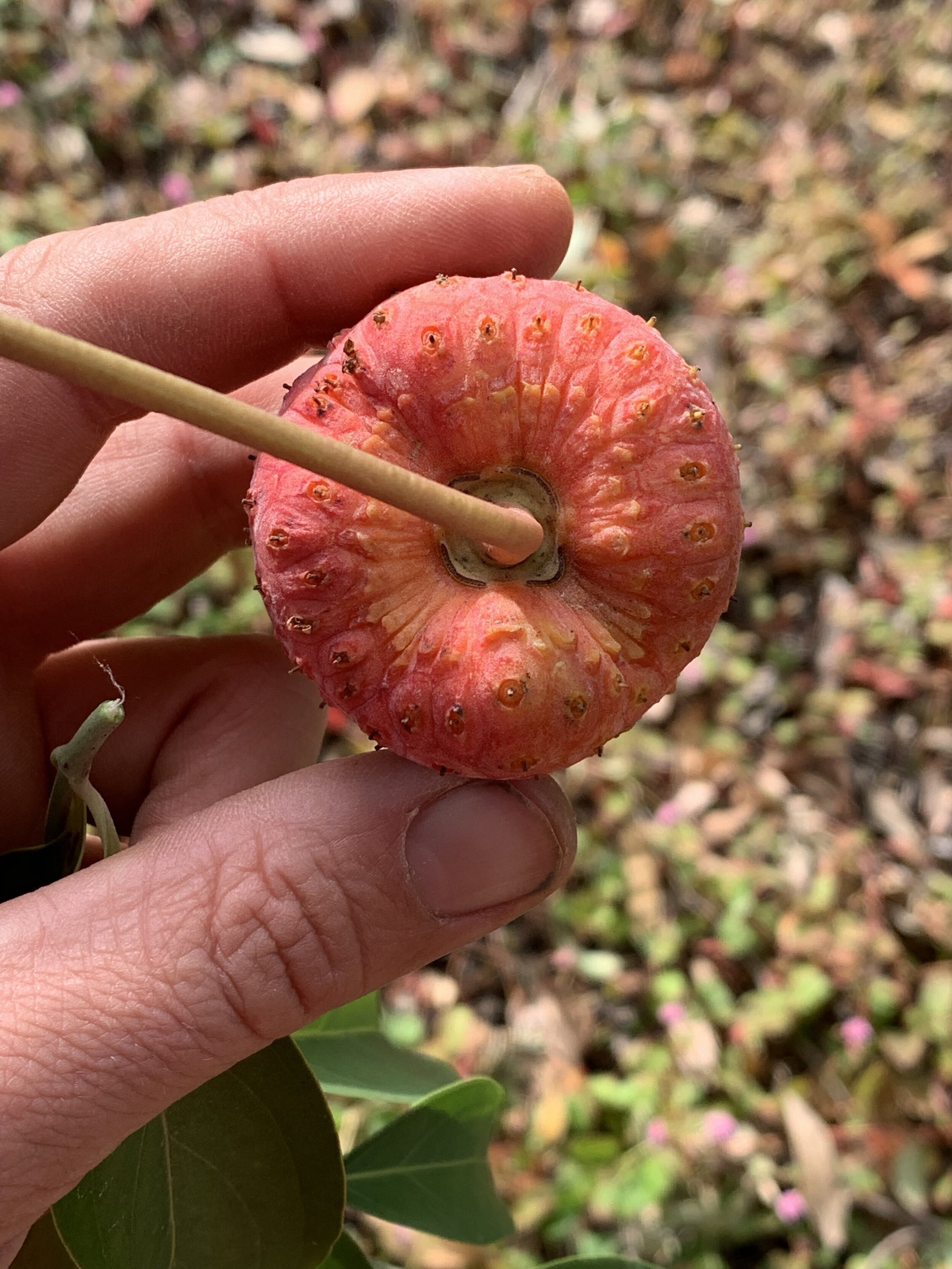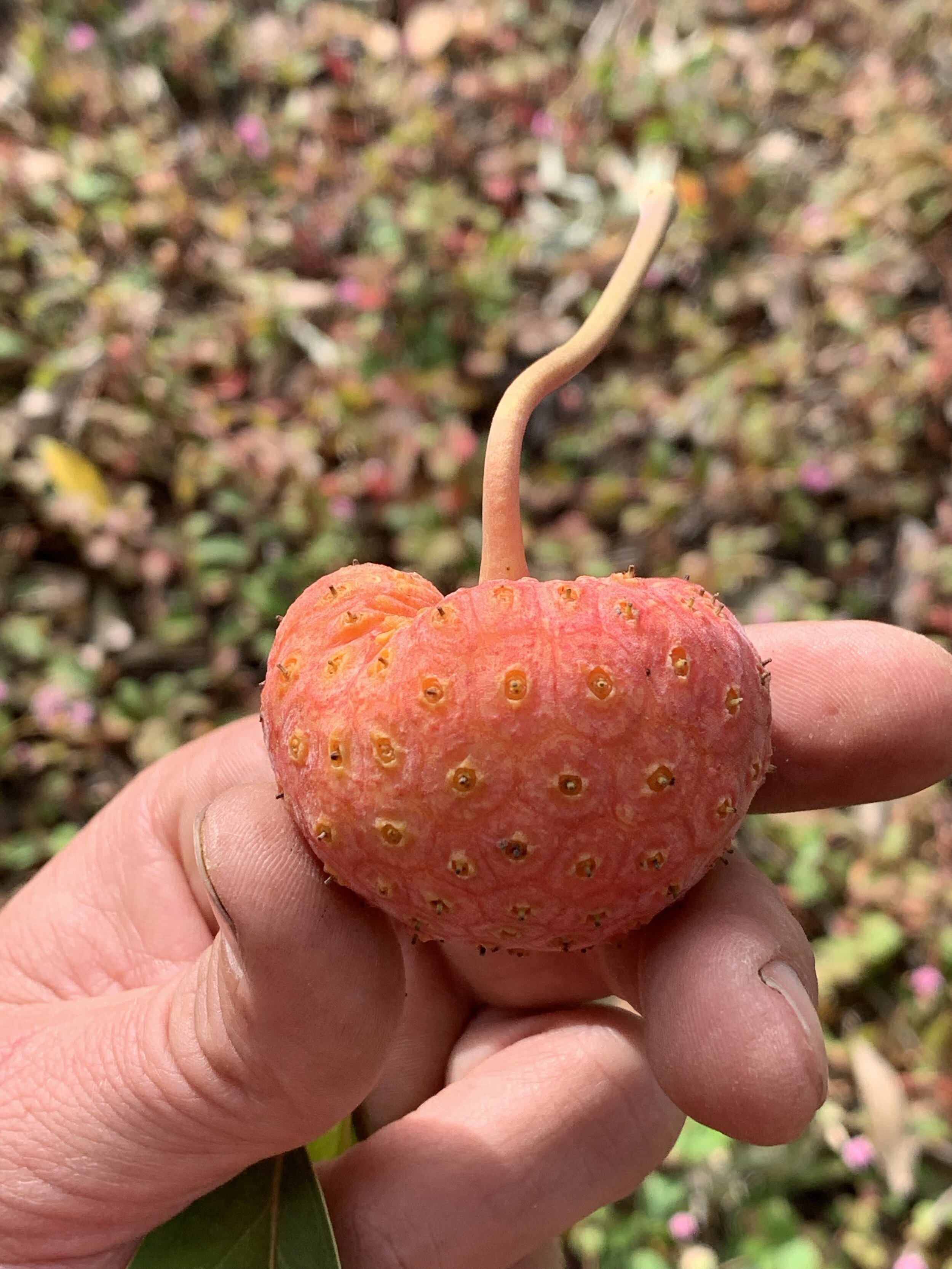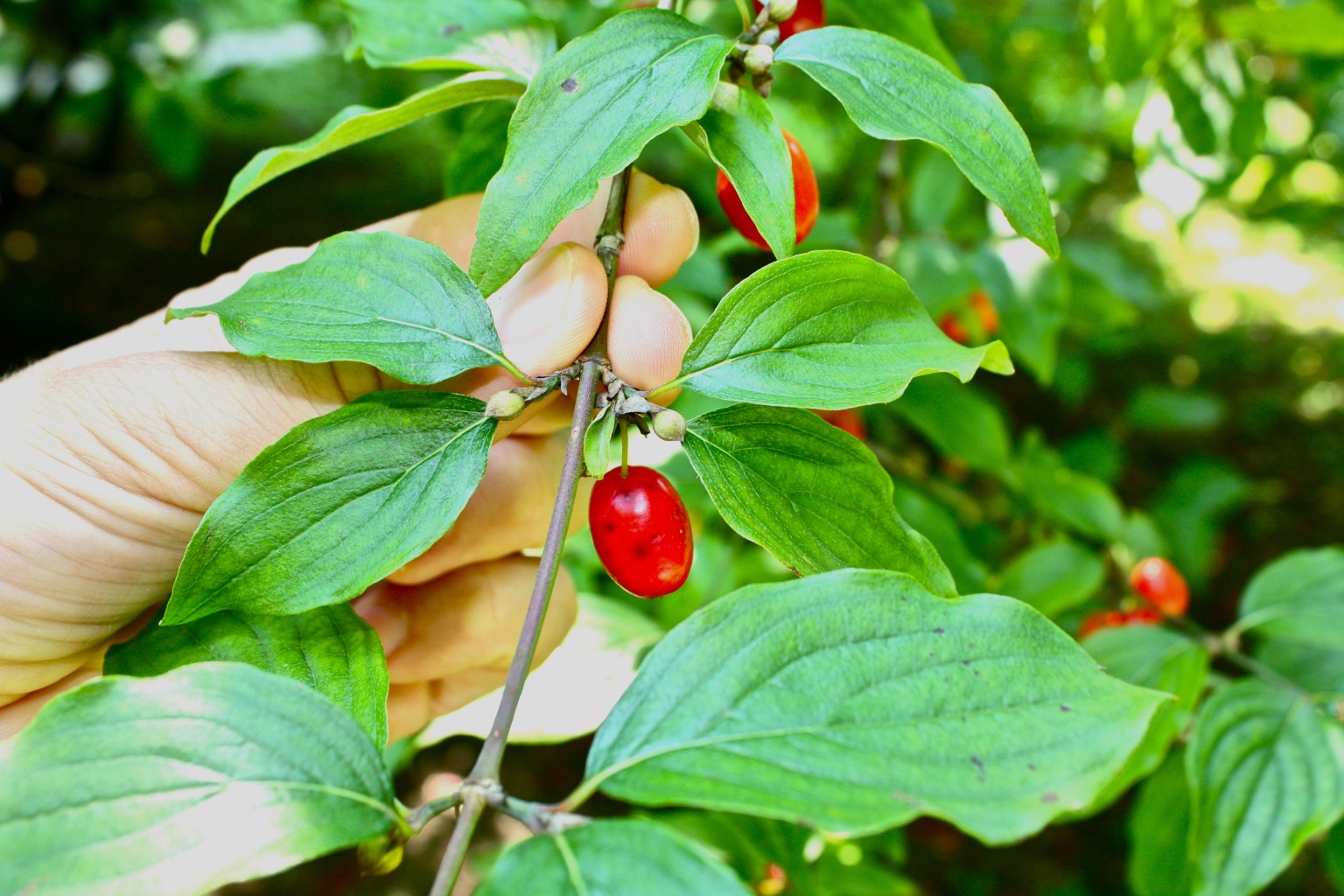Cornus Kousa - a beautiful small tree native to east Asia, Korea, China and Japan. Trees bear an edible fruit. The thin fruit rind is best discarded as it imparts a bitter taste. The custard-like pulp can be eaten when ripe or used in jams or sauces. The fruit is not widely eaten but can be seen used as a landscape tree, in botanical gardens, etc.
Cornus mas - European Cornel
ORIGIN AND DISTRIBUTION
Cornus mas is a species of flowering plant in the dogwood family, native to S. Europe and Southwest including Armenia, Azerbaijan, Georgia, Iran, Turkey, Israel, Lebanon and Syria.
USES AND ETHNOBOTANY
The fruit tastes like something between a sour cherry and cranberry, turns dark red when ripe. The fruit is used to make jams, sauces (similar to cranberry sauce). In Montenegro I found concentrated juice sold in the market.
The fruits when ripe on the plant bear a resemblance to coffee berries, and ripen in mid- to late summer. The fruit is edible (mainly consumed in Eastern Europe, UK, and Iran), but the unripe fruit is astringent. The fruit only fully ripens after it falls from the tree. When ripe, the fruit is dark ruby red or a bright yellow. It has an acidic flavour which is best described as a mixture of cranberry and sour cherry; it is mainly used for making jam, makes an excellent sauce similar to cranberry sauce when pitted and then boiled with sugar and orange, but also can be eaten dried. In Azerbaijan and Armenia, the fruit is used for distilling vodka, in Austria and German Alps is used for distilling Dirndlbrand, in Albania and Bosnia and Herzegovina it is distilled into raki, and in Greece cranberries are used to make home-made liqueur. In Turkey and Iran it is eaten with salt as a snack in summer, and traditionally drunk in a cold drink called kızılcık şerbeti. Cultivars selected for fruit production in Ukraine have fruit up to four cm long. It is eaten in Eastern Europe in many ways including as a medicine. It is very high in vitamin C and is used to fight colds and flus.
The fruit of C. mas (together with the fruit of C. officinalis) has a long history of use in traditional Chinese medicine. Known as shan zhu yu, 山茱萸, it is used to retain the jing, essence, to tonify the kidneys, and in cases of spermatorrhea.
PROPAGATION AND CULTIVATION
Cornus mas can be propagated from seed. The seed must be separated from the fruit flesh since this contains germination inhibitors. Stored seed should be cold stratified for 3 - 4 months and sown as early as possible in the year. Scarification may also help as may a period of warm stratification before the cold stratification. Germination, especially of stored seed, can be very slow, taking 18 months or more.
C. mass can also be propagated from cuttings of half-ripe side shoots. Cuttings of mature wood of the current year's growth, taken with a heel if possible, autumn in a cold frame. New growth can also be air airlayered.
I took this photo in the Ljubljana botanical garden




